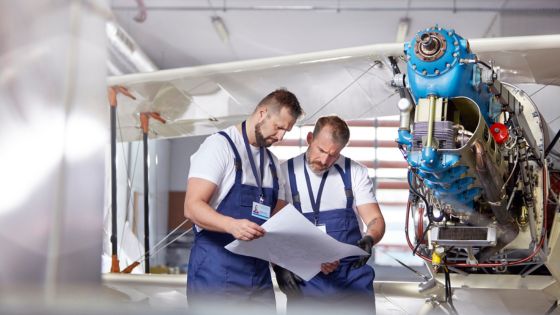The aerospace manufacturing industry represents a cornerstone of technical innovation, economic vitality, and global competence. It is a sector intrinsically linked with advanced technology and precision, responsible for producing aircraft, spacecraft, satellites, and their components. The industry’s output plays a vital role in numerous areas such as commercial aviation, defense, space exploration, and satellite communications.
Beyond its direct contributions, the aerospace manufacturing industry also drives advancements in related fields, including material science, engineering, and logistics. Its importance in shaping global transportation, defense capabilities, and scientific discovery cannot be overstated.
Innovation in Aerospace Manufacturing
Innovation in aerospace manufacturing is essential for the industry’s continued growth and success. Current trends in the sector include a focus on increasing efficiency through automation, reducing costs through advances in materials science, and improving performance by utilizing new technologies.
Manufacturers are using digital twins to simulate aircraft components before they are produced, resulting in reduced development time and cost. Additionally, automation is becoming increasingly common in processes such as composites lay-up and drilling. This allows companies to reduce labor costs while improving quality control.
Materials science also plays an important role in aerospace innovation. The use of high-strength alloys, lightweight composite materials, and advanced coatings has enabled significant weight reduction and improved performance across a variety of aircraft components.
Finally, aerospace manufacturers are now making use of various technologies to improve their processes. This includes the use of TIG welding and laser-based additive manufacturing techniques for producing components with complex shapes and intricate details.
Efficiency in Aerospace Manufacturing
Efficiency is a major factor in aerospace production due to the need for cost-effective and reliable components. Manufacturers are constantly looking for ways to minimize waste, reduce costs, and increase their productivity.
A key trend here is the implementation of Lean Manufacturing principles through the use of digital technology. This includes automating various processes such as material tracking and inventory control. Additionally, machine-learning algorithms can be used to optimize production scheduling for maximum efficiency.
The industry is also leveraging big data analytics for predictive maintenance and quality assurance. This allows manufacturers to anticipate potential issues before they arise, resulting in higher yields and improved customer satisfaction.
Finally, the rise of Industry 4.0 has enabled a connected factory system where equipment and machines communicate with one another to reduce waste and optimize performance. This has enabled aerospace manufacturers to create a more efficient, collaborative environment that is capable of responding quickly to customer demands.
Key Trends in Aerospace Manufacturing
Aerospace manufacturers are continuing to look for new ways of achieving cost savings, efficiency gains, and performance increases. Current trends in the industry include investing in automation, researching advanced materials, and utilizing modern technologies.
Automation can be used to reduce labor costs while improving quality control. Factory automation is also key for reducing production time and increasing production capacity. Additionally, robotics and autonomous vehicles are being developed for use in hazardous environments, such as those encountered during spacecraft launches.
Materials science is also playing an increasingly important role. Companies are investing heavily in research into lighter and stronger materials to improve aircraft performance and reduce fuel consumption. This includes the development of high-strength alloys, lightweight composite structures, and advanced coatings.
Lastly, aerospace manufacturers are using cutting-edge technologies such as laser-based additive manufacturing, 3D printing, and robotic welding techniques. This has allowed them to produce components with complex shapes and intricate details cost-effectively.
Conclusion
Now that we have examined some of the key trends in aerospace manufacturing, it is clear that innovation and efficiency are essential for staying competitive in this sector. Automation, advanced materials science, and modern technologies are all integral aspects of aerospace production. Companies that embrace these strategies will be well-positioned to remain successful in an ever-changing market.

